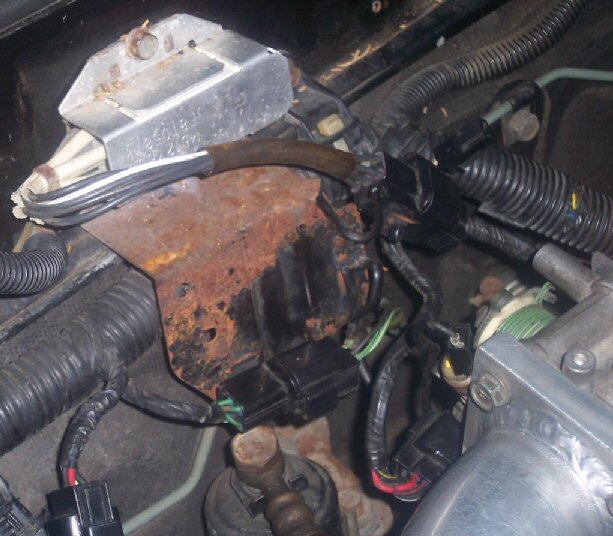Table of Contents
Engine Won't Start
There have been a number of posts to our forums regarding a new engine that doesn't start. While this issue isn't really ECMLink related, the potential causes can be numerous, so I thought we'd start a page to document some common and not-so-common cures.
Details
When a new engine doesn't start, you have to check the basics: computer, fuel and spark
Computer
First, verify that the ECU is powering up and seems to be functioning normally. Observe the check engine light when you first turn on ignition. It should come on for five seconds and then go back out. If it stays on constantly, then suspect something related to the ECU and/or wiring leading up to it. In addition to the check engine light test, check to see that the in-dash stock boost gauge needle moves up to about the half-way mark and stays there when you turn the ignition key on.
Try to get ECMLink to connect to the ECU before trying to start the engine. This will help greatly in your debugging efforts, if they are needed. If you can get ECMLink to connect, you will have not only confirmed 100% that the ECU is up and running OK, but you can also start some basic checks before the engine even turns over. Start an ECU stream (ECU→Stream on) and check that intake temp, coolant temp, TPS, etc., all make sense. For example, if you see stuff like -40F for intake temp, then you may have a BlownSensorGround.
Spark
Verify that spark is getting to the plugs as the engine is cranking. There are a number of ways to do this. My personal preference is to remove a plug, connect the plug wire back up to it and lay the plug across a good grounding point. Then, while someone else cranks the car, watch the gap between the electrodes and confirm that you're seeing an electrical arc across this gap. Some people might also just hold the plug boot and then touch the side electrode to a ground point while someone cranks the car. But if you hold that boot, you're eventually going to get a sizeable shock if there's ever a small hole in the insulation, for example. So don't even start… Also, if you have a 2G DSM, keep in mind that you may need to SwapPlugWires.
There are probably a number of other debugging tips to go here too. Fill in as you see fit.
Fuel
First, verify that the fuel pump is pressurizing the fuel rail. Hopefully you have a fuel pressure gauge for this purpose. If not, you can disconnect the fuel return line from the pressure regulator and run it into a gas can or something to confirm that fuel flows out when the pump is activated.
If you can connect with ECMLink, verify that the ECU is trying to pulse the injectors while cranking (view InjOn). If throttle position (ThrotPos) is too high while cranking, you may be invoking the cranking fuel cut feature in ECMLink intended to help users clear out a flooded engine.
It's also possible to plug the injector resistor pack into the ISC's connector. They are both identical 6-pin connectors and are located close enough to each other in the engine compartment to be confusing. If you do swap these, the injector resistor pack will get very hot with the key on and, of course, the engine will certainly not start. Doing so will also possibly damage the ISC drivers in the ECU. You can see a picture of this wired incorrectly below. Note the black wire with yellow stripe on the connector plugged into the ISC. If you refer to the 1G MFI schematic, you'll see that there is no black wire with yellow stripe on the ISC connector. But there is one on the injector resistor pack connector.


